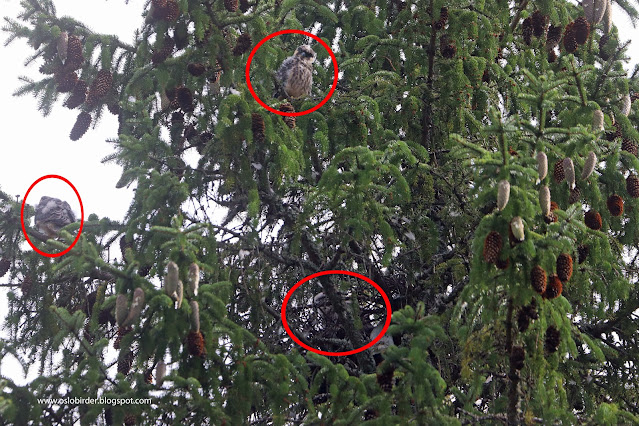Forget the idea of threesomes I can just be a voyeur!
Today was wet and windy and this is the sort of mid summer
weather I look forward to. I checked the tide tables and with low tide at 4pm
decided to give Fru G some more of my love. She can just be
how she likes, I don’t care…
Low tide at the moment is clearly a lot higher than it was
earlier in the month because there was very little mud and surprise, surprise
very few waders. One Redshank was the only migrant😂.
My twitter feed is full of pictures and videos from the north Norfolk coast in
GB showing many thousands of waders currently. Many of these have surely flown
over Norway but why don’t they stop in Oslo??
I left Gressholmen feeling very dejected and considering how
I could keep this up but then found there are other ways to get your birding
rocks off. If a muddy bay doesn’t attract waders then maybe a rock can?
Galteskjær is responsible for my only Oslo sightings of Little Stint and
Turnstone so is actually more productive in that respect than Gressholmen which
is only responsible for one species - Broad-billed Sandpiper.
The other advantage with Galteskjær is that she can (must)
be viewed fleetingly from afar and with a lack of physical contact she
hopefully offers the chance of a healthier and less dependent relationship.
As the ferry approached I saw a wader but it was nothing
more exciting than a Common Sandpiper. As we sped past I saw two more – a Dunlin
and a TURNSTONE!! Only my second in Oslo and of course a new species for
#oslo2024. Currently my 189th species (before accounting for the redpoll
lumping) and this is all all I need to continue going out on the ferry. It is a
fools game though - I have now had 7 visits to Gressholmen (and Galteskjær)
this July and only 3 new species to #oslo2024 to show for it.
 |
| Dunlin (myrsnipe) and Turnstone (steinvender) on Galtesjkjær as the ferry speeds by |
 |
| and two Common Sandpipers (strandsnipe) |
 |
| an eveing Beast walking trip in sunshine to Fornebu yesterday gave great views of a Swallowtail |

















































